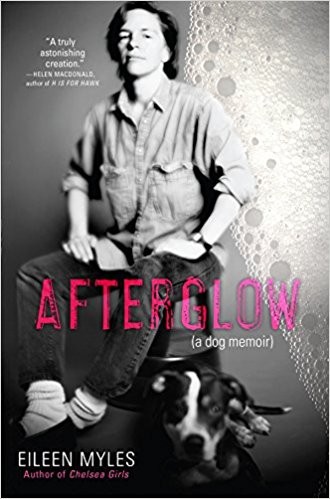 When I read Eileen Myles’s most famous book, Chelsea Girls, I found myself regretting my mild little life. It’s a book wrought from the chaos of New York City in the 1970s: sex, crime, booze and drugs, poverty, and poetry. None of that had ever been in my life. My experience with Chelsea Girls was practically anthropological, so distant was the content from anything I’ve lived, and it stirred in me both jealousy and relief.
When I read Eileen Myles’s most famous book, Chelsea Girls, I found myself regretting my mild little life. It’s a book wrought from the chaos of New York City in the 1970s: sex, crime, booze and drugs, poverty, and poetry. None of that had ever been in my life. My experience with Chelsea Girls was practically anthropological, so distant was the content from anything I’ve lived, and it stirred in me both jealousy and relief.
The book did make me wonder how its author ended up, in a metaphysical sense. In the movies, dissolute youth often ends in a fiery wreck at the bottom of a ravine. In life, how does a bohemian poet cope with middle age? What does settling down look like for them? After multiple books that avoid the “memoir” label, what will they elect to write about that finally fixes it on the front cover?
In Afterglow (a dog memoir), I have an answer, and yet another example of the shadow life, the what-might-have-been, that divides Myles from me. I have never had a dog, and always wanted one, and Afterglow revolves around Rosie, the pitbull whom Myles cared for from 1990 to 2006. In this book, Myles grants to Rosie a remarkable breadth of experience and ability, and they toy with form and narrative freely. An early chapter comprises a puppet talk show on which Rosie is a guest and in which a dream of Myles’s is embedded. Later, Rosie and Myles bat the first-person pronoun back and forth in chapters both confusing and captivating. Rosie calls them Jethro instead of Eileen, philosophizes about Manichaeism, and asks its author what the book is even doing.
“Dog ghostwriting”—great language, funny idea, but honestly aren’t all dog books dog ghostwriting. No dog writes a book, no dog wants a book written no dog reads a book and the only part that might be interesting is the idea that all writers are ghosts. Look at you! The writer spends her life reducing her own existence to that of a ghost.
In just a few sentences, Myles and Rosie 1) expose why dog books are sort of dumb, and 2) hew close to questions that have plagued me for most of my life as a writer: whether authors are as real to most readers as they are to me, whether the experience of reading is normal or actually psychedelic and bizarre, what an author’s name written on the cover of a book signifies.
Not all of their experimentation is successful. Sometimes Rosie’s recorded thoughts are so jumbled that they become tedious to read, and I don’t really understand what foam has to do with art. But Myles’s books always feel this way to me: some aspects hit so hard that they lodge in the mind, crystalline and perfect, and others drag across the eyes as if I’m forced to mop up a soiled floor. Of course, Myles reaches different readers for different reasons. That is the glory of experimental literature: in it, there is no such thing as mass appeal.
I appreciate the sound of Myles, so unlike any other writer:
Meanwhile the gentle tap tap tap of the music of the house still pouring out. One side of the fireplug is blue. Chalk blue. I want to say scrawl. The cat seems to get distracted so I’m luring him in. He looks back at this day. More agitated it holds a white dog barking jumping up and down. The wall behind him is rose faded salmon in sunlight going to white. Blazing. My yard he barks. My sidewalk. We’re close up and all we see is whiteness and fence.
Afterglow is a memoir primarily about Rosie, but not exclusively about her. The reckoning a writer tends to do after age sixty, the backward gaze at a life, is present here, but not in an ordinary way. Myles has maintained the fire, the dirt, and the immediacy that characterized Chelsea Girls as well as so much of their poetry, but they’re using it to examine the mortality of their dog and, in no small way, themself.
Yet this is what writing is. A leaving behind.
The two chapters that discuss Rosie’s death in detail are as affecting as writing gets, but they make up only one mood in a patchwork of them. Like much of Myles’s work, Afterglow is less a unified book than a conversation. With itself, with its author, with its author’s dog, with me, the anthropologist who can’t stop reading about a life she barely understands. Like all great conversations, it ranges everywhere, strikes wrong notes, stutters in finding its way, contains moments of astonishing beauty and insight. Like all great conversationalists, Myles has a profound sense of themself, as well as a willingness to risk saying something totally weird as long as it’s true.
___
Katharine Coldiron’s work has appeared in Ms., The Rumpus, The Collagist, and elsewhere. She lives in California and blogs at the Fictator.

1 comment
sarah m says:
Nov 6, 2017
Great review and your experience with the foam section (and several others) was mine. I admired much of her writing and there were passages that blew me away. But the bottom line: I had to read it like poetry, a bit at a time.